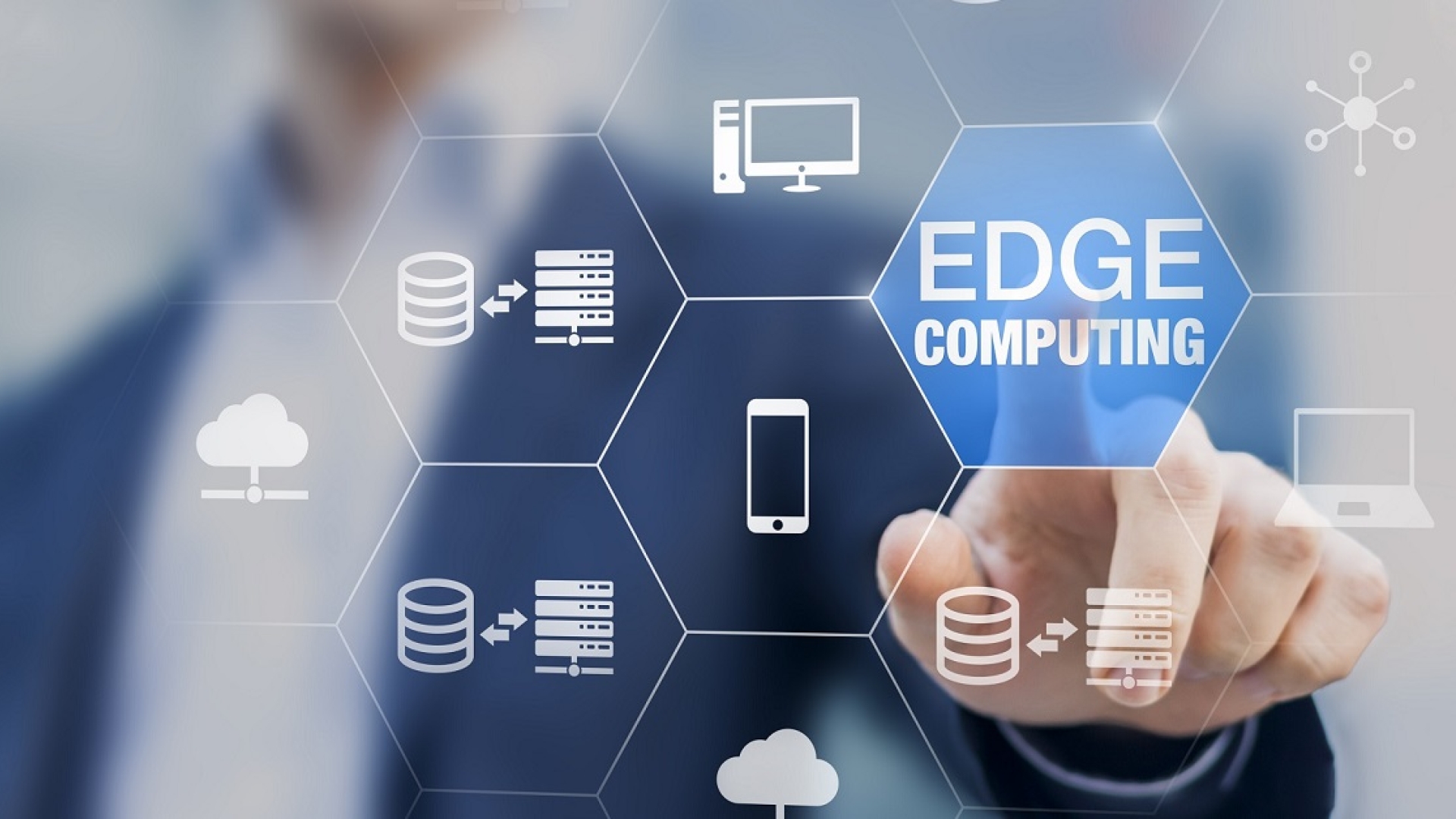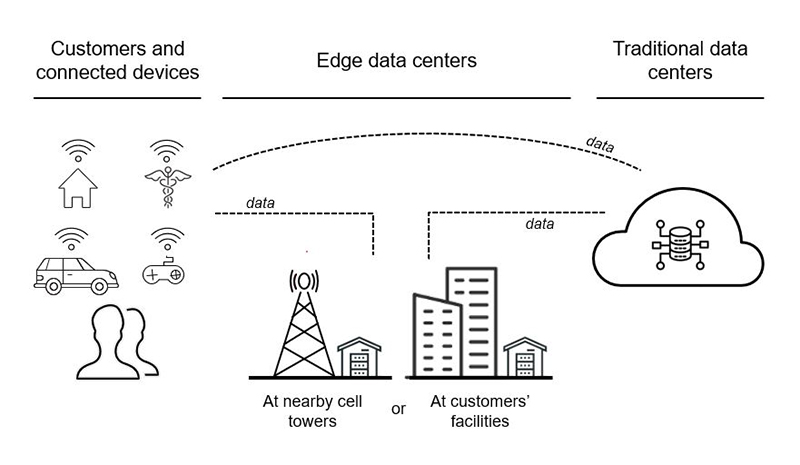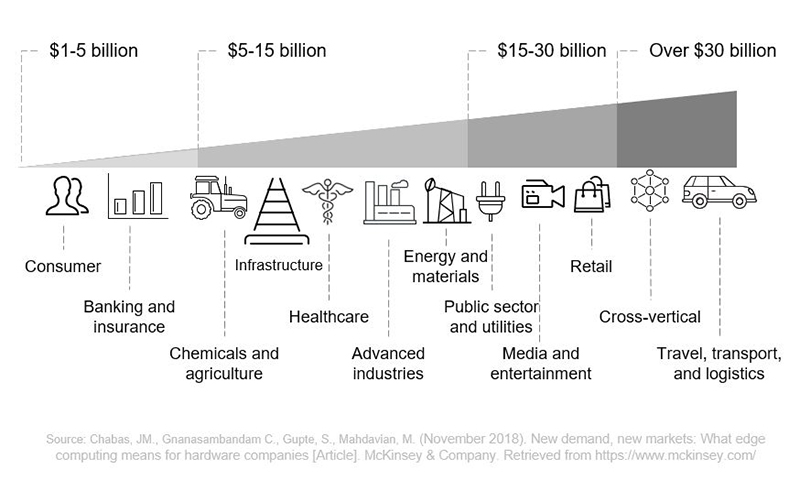Energy IQ: What is edge computing and how edge data centers work
By Aytek Yuksel, Content Marketing Leader - Power Systems

200 billion. That's the number of internet of things (IoT) objects humankind has today 1. Many of these devices need computing and storage activities, driving the data center industries growth.
This ever-increasing use of data fueled the rise of hyperscale data centers over the last decade. These massive facilities brought important benefits and their large-scale lowered costs. Many businesses outsourced their computing needs to hyperscale and colocation providers and focused on their core businesses. At the same time, these large facilities moved the data processing and storage away from the end-users.
Meanwhile, something else has changed, and it has created the need for edge computing.
Let’s start with "why" the need for edge computing, and then cover more common questions and answers about edge computing to boost your energy IQ.
Why do we need edge computing and edge data centers?
Customers seek lower latency (increased responsiveness in computing activities) as IoT devices get integrated into many tasks in our lives. This low latency is one of the key drivers for edge computing.

Imagine having a smart bulb and having to wait five seconds to turn it on after using the smart light switch or the app on your smart phone. What about your sensor-rich car, and its need to rapidly process data for autonomous driving or other features. Any lag in data processing is more than a minor inconvenience. Let’s go one more step ahead; many healthcare tasks now also feature IoT devices. Any lag in data processing could have life-threatening implications.
Lower latency is an important need in many industries; a need that will rapidly grow as 5G technology further fosters device to device connections. Accomplishing lower latency gets challenging when the data generated by the smart device is transmitted to a centralized data center for processing, then transmitted back to the device. That central data center might be thousands of miles away from the device, extending the time it takes to transmit the data. Meanwhile, edge computing brings data processing much closer to the end user, enabling much lower latency.
What is edge computing vs. edge data centers?
Edge computing is the activity of processing and storing data close to where the data is generated and used. Edge data centers are the physical structures where edge computing takes place and are usually located within a few miles from where the data is generated. In the examples above, the edge data center could be on-site at the hospital or at a nearby cell phone tower. Edge data centers are a part of the broader connectivity ecosystem and operate in collaboration with the central data centers.
How do edge data centers work?
From outside, an edge data center looks like a modular building or a shipping container. Inside this enclosure, critical components of a regular data center come together, but at a much smaller scale. These components include racks of computing equipment, cooling, power distribution, fire, security, monitoring systems and beyond. Edge data centers also often feature back-up power systems in case their primary source of electricity is interrupted.
Edge data centers focus on delivering low latency data processing and are an extension of the cloud-based network. In the example of a smart car or a gaming application, real time processing needs would be handled by edge data centers, offering the end user very low latency. Meanwhile, cloud-based data centers would still play a role by focusing on processes such as user login and record keeping that don’t require low latency.
Where will I see edge data centers?
Edge data centers are already in use in sectors where there is growing use of IoT devices and increased need for low latency. Some of the use cases, such as autonomous vehicles and smart cities, already demand a robust eco-system of edge data centers.

Physically, these edge data centers are located close to the origination of latency sensitive data. The projections include locations such as cell towers, manufacturing and healthcare facilities. However, locations vary based on the data origination point and the use cases.
Cummins' involvement in data centers
Cummins Inc. has long-term partnerships with a variety of data center customers as a leading provider of diesel and natural gas power generators, digital solutions and control systems. As the data center industry continues to innovate, so does Cummins. Cummins’ recent investments in energy storage, fuel cells and advanced microgrid control technologies has boosted its capability to offer energy solutions tailored for the data center industry’s emerging needs.
Sign up below for Energy IQ to receive energy focused insights in markets ranging from data centers and healthcare facilities, to manufacturing facilities and everything beyond. To learn more about data center power solutions offered by Cummins, visit our webpage.
Think your friends and colleagues would like this content? Share on LinkedIn and Facebook.
References:
1 Intel. (n.d.). A Guide to Internet of Things [Infographic]. Retrieved from https://www.intel.com/
Author Profiles

Aytek Yuksel, Content Marketing Leader - Power Systems
Aytek is a marketing leader at Cummins, focusing on technology and thought leadership. Since joining in 2008, he has held various marketing roles and now shares insights on markets, technologies, and energy transition. Aytek lives in Minneapolis with his wife and two kids.
Related Tags